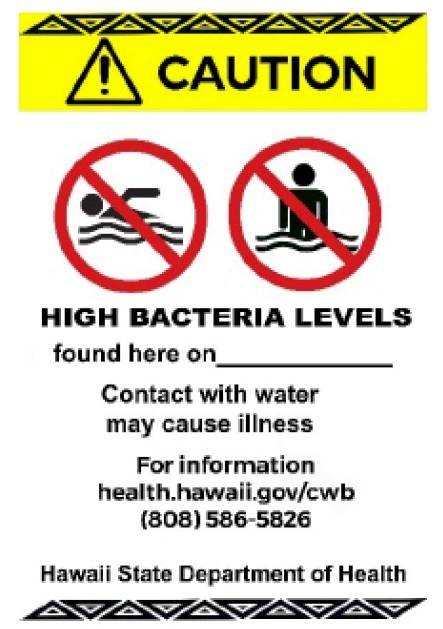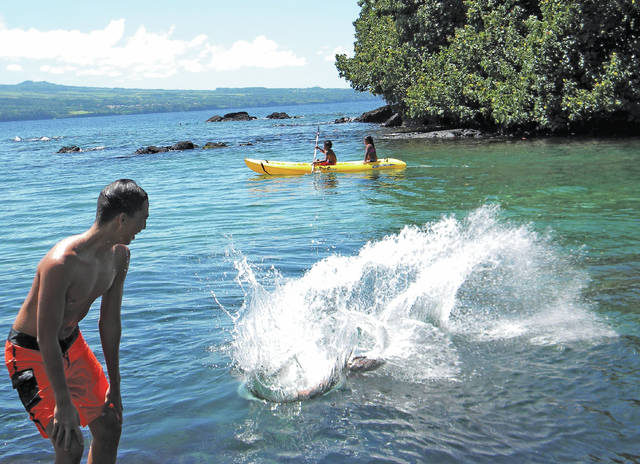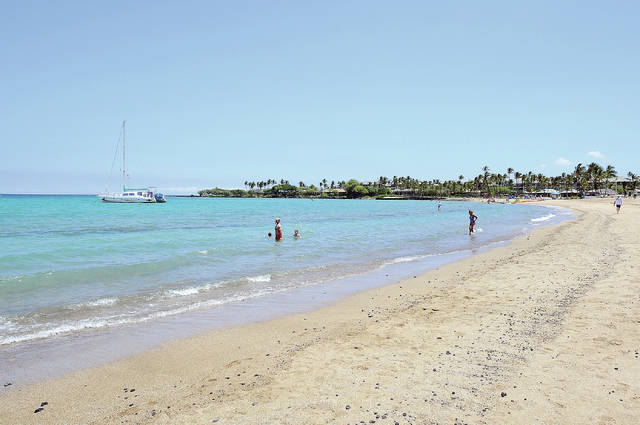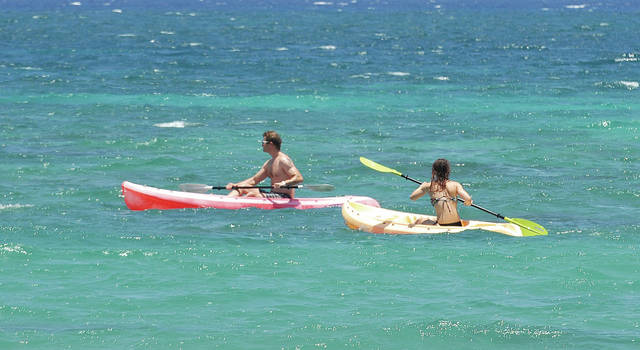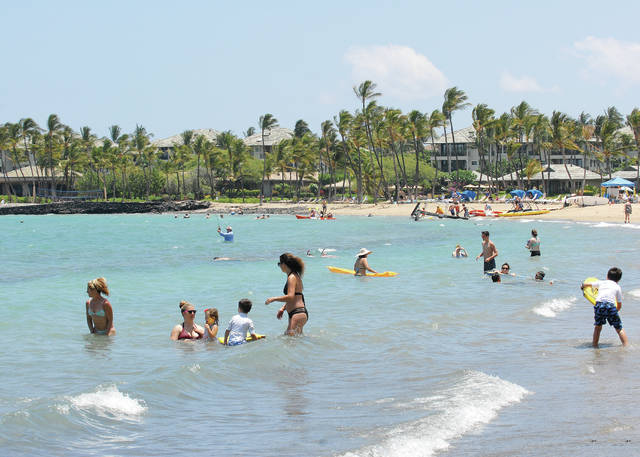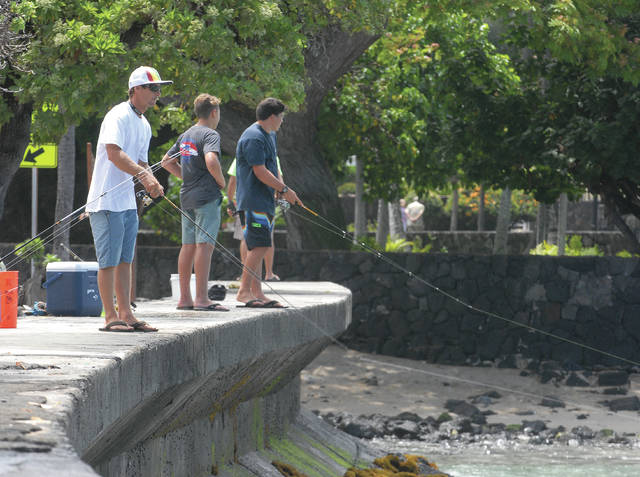Is it safe to go for a swim? State ramps up public notifications of water quality
Wondering if your favorite beach is safe for a swim? You’ll know a lot sooner now that the state is implementing new public notification procedures that require signs posted as soon as test results show the water quality does not reach safety standards.
ADVERTISING
Previously, signs were posted only when sewage spills threatened water quality, or when more permanent water quality problems existed.
The signs advise the public of a risk, but the state doesn’t require swimmers to stay out of the water. The beach remains open and the public can decide how much risk they’re comfortable with, under state policy.
The state also has created an email notification list for people who sign up, said Myron Honda, environmental health specialist with the state Department of Health’s Clean Water Branch. Prior to the changes, beachgoers could visit the state website (http://bit.ly/2sa5Ft7) and find raw data as it is posted online, but not necessarily in as timely a manner.
The changes are the subject of public informational sessions statewide over the coming months. There’s one scheduled for 6 p.m. Tuesday at the district health office on Kamehameha Avenue in Hilo. The state held a session Wednesday in Kona, but has decided to schedule a second one in July out of concern there wasn’t sufficient public notice.
The changes are in response to requirements by the U.S. Environmental Protection Agency, which provides about $300,000 annually to the state to help it comply with the Clean Water Act. The 2014 guidelines set public notification requirements and dictate that beach water quality will be evaluated on the level of the fecal bacteria enterococci.
“EPA came down on us because we were not strictly following their performance criteria,” Honda said Thursday in a telephone interview.
The $300,000 provided by the EPA pays for two full-time employees plus lab support. The state has just one environmental health specialist per island, charged with sampling water on a regular schedule. The money isn’t in President Donald Trump’s proposed budget, which could spell the end of the program.
“We’ll keep this up as long as the funding is available,” Honda said. “The beaches are such an important economic generator for the state.”
Hawaii measures two kinds of bacteria, enterococci and Clostridium perfringens, Honda said, because enterococci is found naturally in soil in tropical environments. That can lead to false readings.
Clostridium perfringens is a tracer for human sewage and considered a secondary indicator to help confirm high bacterial indicator counts.
The enterococci and Clostridium perfringens themselves don’t cause the problem but are indicators that more dangerous critters could be lurking.
“We will continue testing for C. perfringens as usual, but we are not able to take any action based on those results (i.e., we cannot post advisories based on CP results),” Honda said Friday in an email follow-up. “Although we do constantly monitor the results of both organisms for trends or patterns at the various beaches.”
There are some 95 test sites on the Big Island, but most are not tested regularly. There are 69 sites that are supposed to be monitored on a twice-weekly (core sites) or biweekly (rotational sites) basis.
Despite some short-term spikes in fecal bacteria, waters around the Big Island show levels well below those considered unsafe. But most of the average readings for enterococci have been steadily increasing over the past 10 years. In fact, average beach fecal bacteria levels increased five-fold between 2006 and 2016 at key West Hawaii beaches and 134 percent on the Hilo side, according to a West Hawaii Today analysis last year.
Beach-goers interviewed for that July article weren’t worried about the water.
“My children have been swimming in it, my grandchildren have been swimming in it,” said Katheryn Passenelli, a repeat visitor from Wyoming sunbathing at Laaloa. “I don’t have any concerns.”
A more recent study by the Clean Water Branch found Kailua Bay and Kahaluu Beach Park having the highest percentage of Tier 1 samples exceeding the standard, with 6.67 and 6.63 respectively, from Jan. 1, 2014, to April 1 of this year.
Keaukaha Beach Park was busy with swimmers Friday, ahead of a three-day weekend. That’s despite a Monday dye test that showed some treated, disinfected wastewater leaking from an outfall pipe into Puhi Bay.
The state on Wednesday reduced the range of the problem area and took down all but two of the warning signs.
In East Hawaii, Honolii Beach Park (9.52 percent) and Leleiwi Beach Park (5.68 percent) had the highest percentages of samples exceeding the standards.
Tier 1 beaches are considered “core” beaches and were ranked as such because of their economic and social importance to the state. Tier 1 beaches are heavily used and may be threatened by some type of pollution and are given the highest monitoring priority.
Contact with contaminated water can lead to ear or skin infections, urinary tract infections, gastrointestinal ailments, pinkeye, respiratory infections, meningitis and hepatitis and other more serious pathogenic infections. The pathogens responsible for these diseases can be bacteria, viruses, protozoans or parasites that live in the gastrointestinal tract and are shed in the feces of warm-blooded animals.


